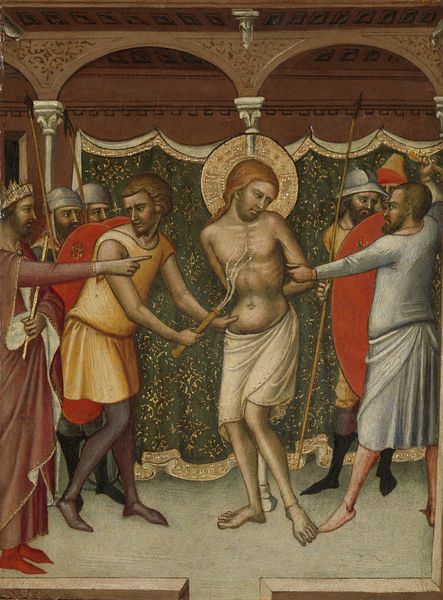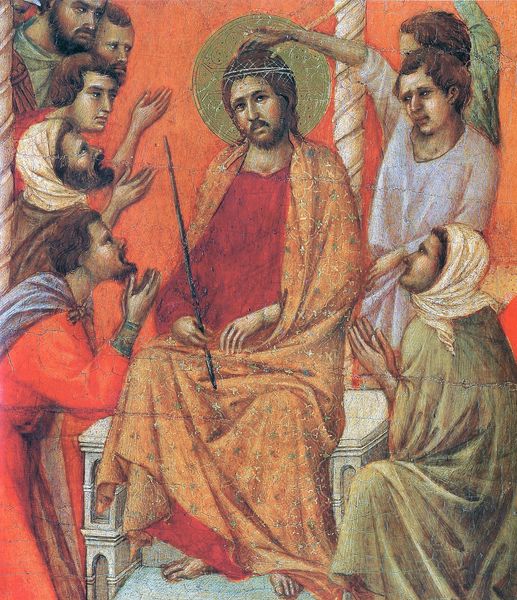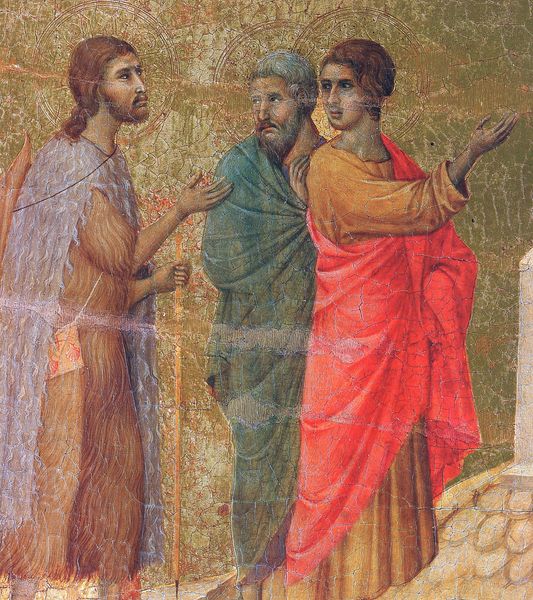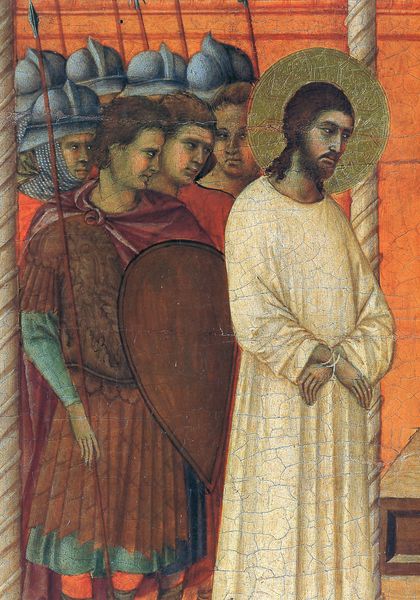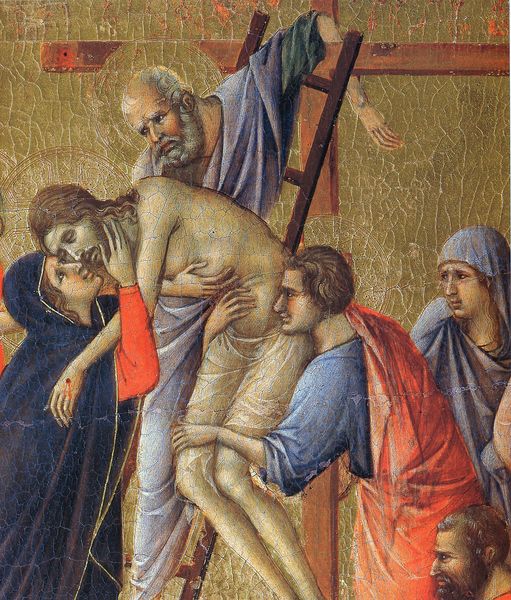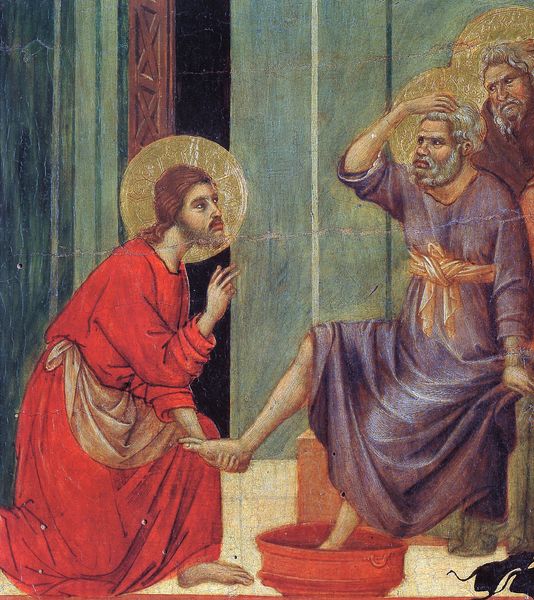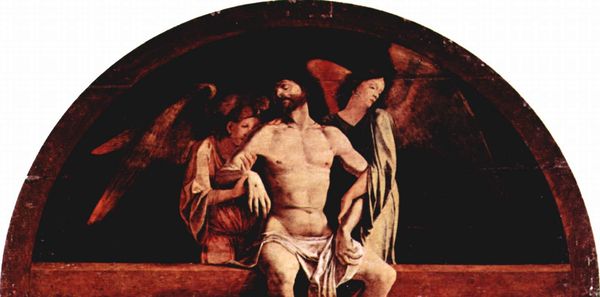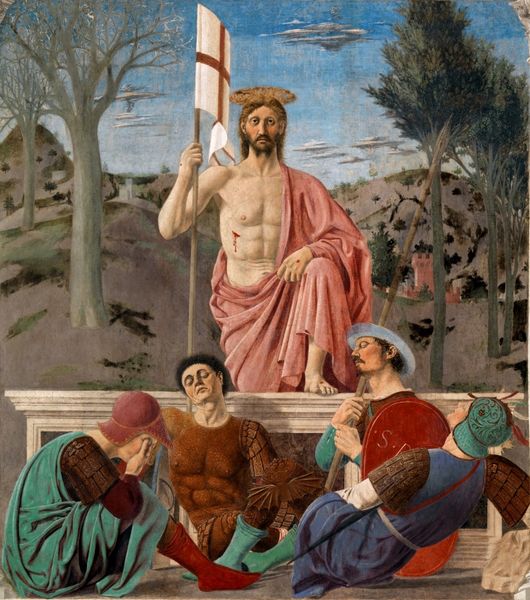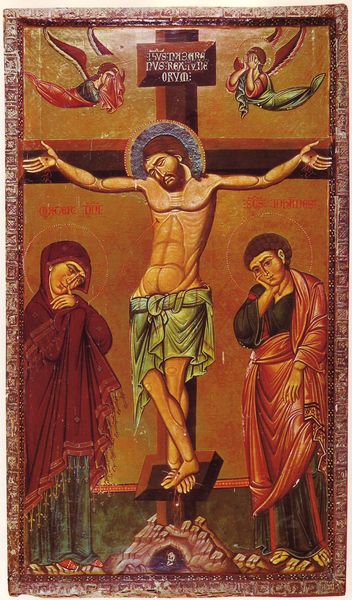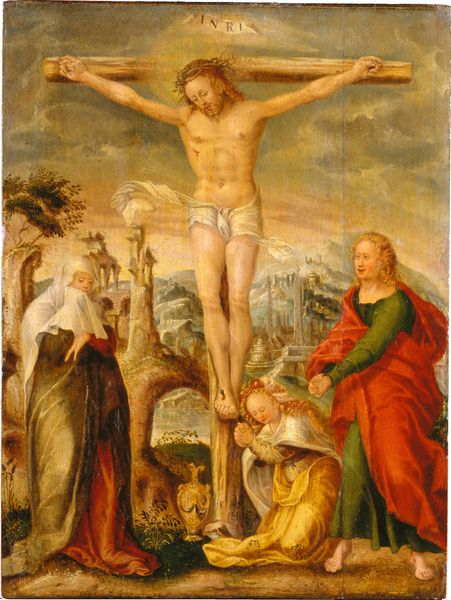
tempera, painting, fresco
#
portrait
#
narrative-art
#
tempera
#
painting
#
sienese-school
#
painted
#
figuration
#
fresco
#
oil painting
#
jesus-christ
#
underpainting
#
soldier
#
christianity
#
mythology
#
human
#
history-painting
#
italian-renaissance
#
early-renaissance
#
christ
Copyright: Public domain
Curator: This panel presents a fragment of Duccio’s “Flagellation of Christ,” dating from 1311. It’s painted in tempera. Editor: My initial reaction is one of striking formality, despite the brutal subject matter. The limited palette of reds and blues set against the ochre background flattens the space, giving it a sense of almost detached observation. Curator: That’s interesting. The flagellation as a theme carries immense cultural weight within the Christian tradition. Here, Christ, bound to the column, becomes an archetype of suffering, embodying the sacrifice for humanity's sins. It speaks to a deep cultural memory of redemption and divine mercy through pain. Editor: Absolutely, and the linear precision enhances that archetypal feel. The crispness of the lines around Christ’s halo and body creates a deliberate stylization. I'm drawn to the almost geometric distribution of figures—the painting conveys a sense of carefully calibrated rhythm in its composition, almost minimizing the emotion in favor of clarity. Curator: The rhythm you observe reflects a common visual strategy from the time. Note how the figures surrounding Christ also hold symbolic significance. They represent humanity at large, either complicit in or witnessing his suffering. The lack of expressive individuality makes them less figures of pure realism and more embodiments of mankind's complex relationship with the divine. Editor: Exactly, it's almost hieratic in its presentation. Even the relatively muted tones emphasize the linearity of the overall form. We’re steered away from an excess of baroque emotion towards an ordered contemplation on form and symbolism. Curator: Which allows viewers through the ages to bring their own interpretation and relationship to that suffering. In essence, it's an artwork with lasting power. Editor: Yes, Duccio really compels us to look at both the tangible execution and broader semiotic implications, even eight centuries later. It all connects, in its own way.
Comments
No comments
Be the first to comment and join the conversation on the ultimate creative platform.
